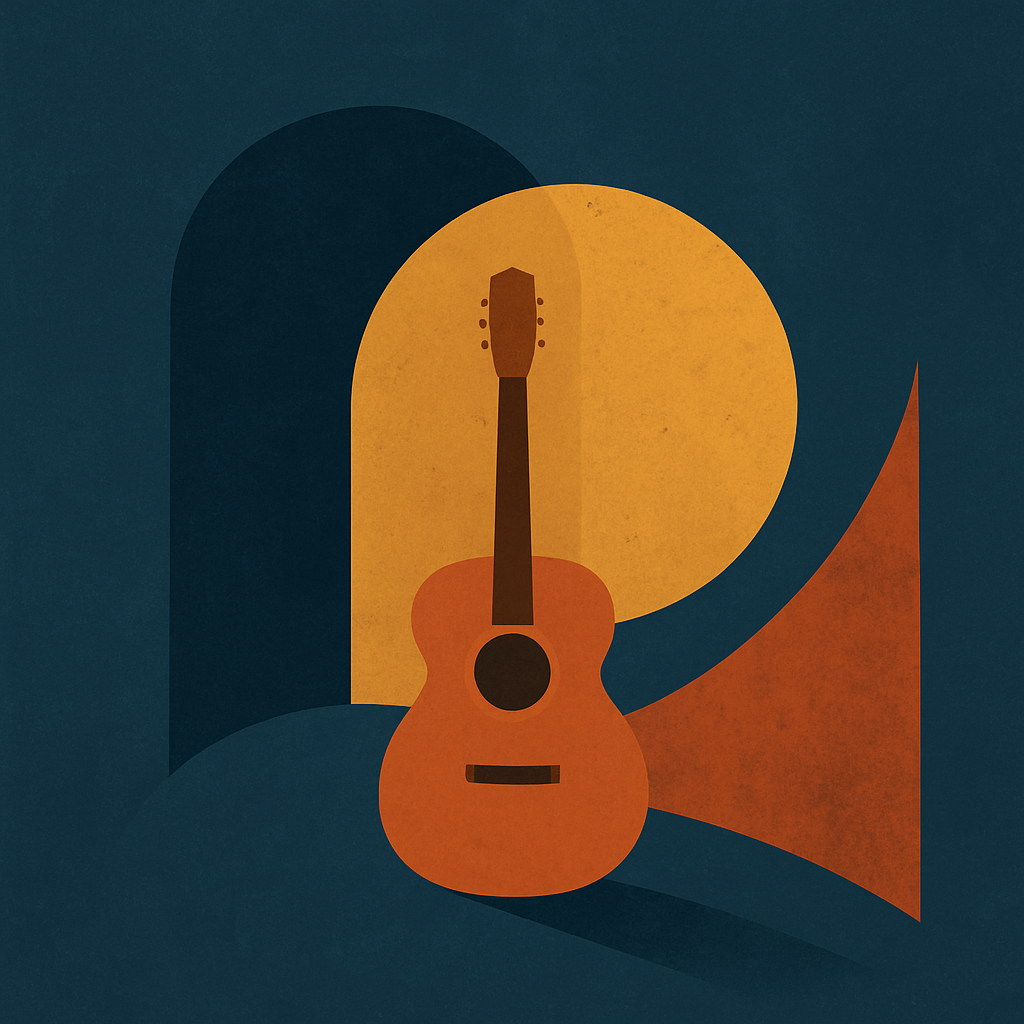Jam Set

You Don’t Have to Be Loud to Belong
How to Step Into Any Creative Space With Confidence, Comfort, and Command
There is a lie that lives in every open mic, every jam session, every songwriting circle and freestyle cipher.
It says:
“Prove yourself.”
Be louder. Be bolder. Be the one they remember.
So we perform.
Not just our music — but our identity.
We shape-shift. We self-sell. We pretend to lead, because we’re afraid to simply belong.
At Sonovor, we kill that lie.
Because belonging is not earned through volume.
It’s earned through vibe.
Through presence, not power.
Through generosity, not dominance.
This is Jam Set — the field guide for creative settings that builds comfort before contribution, structure before spotlight, and rhythm before reputation.
It's not about how to steal the show.
It’s about how to support the song — the shared one, the one being built in real time, between strangers with instruments and stories.
Because when you understand how a room moves, how energy flows, and how to be ready without rushing, you don’t just fit in.
You become the kind of artist people want to build with.
The Jam is a Gym
A jam session is not a show.
It’s not a gig, it’s not an audition, and it’s not a showcase.
It’s a gym. A rehearsal of presence.
A space to test your instincts, stretch your skills, and strengthen your awareness.
This is where ego dies and sovereignty begins.
Because here, it’s not about who’s the best — it’s about who can serve the moment.
Jam spaces are creative crucibles.
You will be challenged.
You will be ignored.
You will be seen, then unseen.
But if you stay in it — you’ll learn more about artistry than any stage can teach.
Arrive Ready, Not Loud
Most people walk into a jam either frozen or frantic.
They bring too much or too little.
They try too hard or they don’t try at all.
That’s a systems failure — not a personal one.
Here’s how we fix it.
Your Personal Jam Kit:
A readiness protocol for creative engagement. This is your toolkit:
- Anchor Repertoire (3–5 pieces):
Songs, riffs, spoken pieces, loops, or grooves you can execute flawlessly.
These are your “grab bag” — reliable, flexible, and adjustable to different keys, tempos, and energies. The songs that tell your stories. Songs that other people can share in. - Canon Familiarity:
Know the go-to songs in your scene. Not just your own stuff.
Can you fall into a groove someone else starts? Do you know the chord changes, the vocal shapes, the energy arc? - Gear Preparedness:
Come tuned. Come charged. Come with backup cables, extra picks, a working interface.
Your tech should not be the thing that holds the room hostage. - Entry Phrases:
Practise how to begin a contribution.
A groove that doesn’t need explanation. A lyric line that invites not demands. A pulse others can catch. - Body and Mind Checks:
- Hydrated?
- Fed?
- Grounded?
- Clear on why you came?
Because your system needs to be stable before you offer stability to the room.
The Politics of Creative Presence
There are no formal rules in a jam.
But there are laws.
They’re unspoken — but deeply enforced through tone, rhythm, and reciprocity.
Here’s what they look like:
- If someone’s in the flow — don’t interrupt.
- If the room is loud — enter with clarity, not volume.
- If someone hasn’t contributed — make space for them.
- If you make a mistake — stay present, adjust, keep playing.
- If the room feels fragile — protect it, don’t push it.
These are not performance rules.
These are relational protocols.
Because the jam is not just sound — it’s trust.
And if you break it, your talent won’t save you.
Step Up. Step Back. Repeat.
The hardest thing for most artists is knowing when to enter.
The second hardest? Knowing when to leave.
To Step In:
- Wait for a break in energy — not just a silence
- Look for eye contact from someone who’s anchoring the groove
- Start low and rise. Don’t land on the 1. Land in the cracks.
- Know what you’re bringing — and what it needs from others
To Step Back:
- When the groove has landed
- When someone else begins to lead
- When your contribution is complete
- When silence is returning
This isn’t about retreating.
It’s about honouring the collective shape of the music.
You’re not here to fill every second.
You’re here to make the seconds matter.
The Roles in the Room
Every jam holds seven archetypal functions.
You will move between them. Know them:
- Anchor: Provides stability, tempo, grounding
- Initiator: Starts ideas with clarity and intention
- Listener: Mirrors and amplifies the emotional tone
- Modulator: Adjusts volume, pace, or key to maintain flow
- Challenger: Pushes the group with creative tension
- Protector: Shields the energy from derailment or ego
- Witness: Holds space without sound — watching, affirming, supporting
Know who’s who.
Know when you’re who.
And know that all roles are leadership when done with care.
Mistakes are Music
You will mess up.
You will miss your cue.
You will crash a transition.
You will overstep. Underperform. Forget a lyric. Play the wrong chord.
That’s not failure.
That’s fuel.
What matters is how you respond:
- Do you freeze or flow?
- Do you self-correct or self-destruct?
- Do you blame the moment — or rejoin it?
Sonovor teaches artists to treat every misstep as a feedback loop.
Not just to get better — but to get freer.
Because when you’re no longer afraid of failing in public,
you become unstoppable in private.
Leave Well
Don’t just disappear.
Leave residue. Leave reverence. Leave rhythm.
- Say thank you to the ones who held space for you
- Compliment a moment that moved you
- Remember a name. Follow up. Offer something next time
- Review your own session: what did I learn, where did I lead, where did I listen?
The jam isn’t just an event.
It’s a relationship.
And every time you enter it with intention — you strengthen the collective body of artists around you.
This Is the Sonovor Way
We don’t throw people into performance and hope they swim.
We build containers where real practice can occur.
Where you feel safe to try.
Where you learn the rhythms of shared contribution.
Where you leave feeling more you — not less.
Jam Set is not a checklist. It’s a new kind of courage.
The kind that doesn’t need a spotlight to shine.
The kind that builds scenes, not just solos.
The kind that turns group play into real power.
You don’t have to be loud to belong.
You just have to come ready.
And come honest.
And come to serve the sound, not just yourself.
Let’s move. Build your kit. Find your room.
And when the downbeat lands — you’ll know what to do.

Jam Set: You Don’t Have to Be Loud to Belong
A Sonovor Field Manual for Creative Presence, Group Flow, and Sovereign Contribution
PREFACE | The Quiet One Always Knew
This book is not for the loudest.
It’s for the ones who wait. The ones who carry depth before delivery.
The artists who’ve been told to “step up” before being invited in.
You don’t need a bigger voice.
You need better architecture around your presence.
CHAPTER 1 | The Jam is a Gym
Why Performance is a Poor Framework for Growth
- Redefining the jam as rehearsal space, not test ground
- The difference between exposure environments and development containers
- How Sonovor reframes public creativity as private transformation
- Group work as strength training for presence, not performance
- Replacing “networking” with creative citizenship
CHAPTER 2 | The Energy Before the Entrance
How to Read the Room Before You Add to It
- The five types of jam rooms (open, anchored, fractured, hierarchical, familial)
- How to assess temperature, tempo, and tone before participating
- Scanning for quiet leaders, harmonic structures, and unspoken rules
- What entering in silence communicates
- How to choose your first contribution with precision, not panic
CHAPTER 3 | Personal Jam Kit
What to Know, Carry, Practise, and Keep Ready
- Three to five anchor songs that are frictionless and flexible
- Your entrance rituals: warm-ups, breathwork, self-audit
- Gear, backups, water, rest: basic body logistics
- Group canon: how to learn the room’s shared songbook
- Emotional tools: how to recover from missteps, rejection, or derailment
CHAPTER 4 | Offering vs Performing
How to Add Without Overpowering
- The psychology of overcompensation in new creative spaces
- The four modes of contribution: support, signal, shift, silence
- How to offer presence instead of volume
- Managing the urge to prove
- Building trust by protecting energy, not dominating it
CHAPTER 5 | Flow Roles and Creative Choreography
The Invisible Politics of Jam Sessions
- The seven flow roles: Anchor, Initiator, Listener, Modulator, Challenger, Protector, Witness
- How to move fluidly between roles without clinging to power
- Understanding leadership by vibe, not volume
- How to de-escalate tension without silence
- When to step forward, when to recede
CHAPTER 6 | Friction and Feedback
When Things Go Wrong — and How to Use It
- What to do when you miss a cue, kill a vibe, or stall the flow
- Handling ego friction without creating rupture
- The difference between critique and correction
- How to re-enter gracefully after a misfire
- What to say after — and when to stay quiet
CHAPTER 7 | Exit With Elegance
Ending Well — So You Can Be Invited Back
- How to signal your end without disrupting group motion
- Closing phrases, musical fades, and body language cues
- Gratitude as belonging
- Debriefing yourself: what worked, what didn’t, what grows next
- The difference between finishing and leaving energy behind
CHAPTER 8 | The Myth of the Soloist
Why Spotlight Isn’t Sovereignty
- Deconstructing the egoic model of stage performance
- The mythic role of the support artist
- How harmony sustains longer than solo
- Understanding reverence as resonance
- Replacing “main character energy” with relational rhythm
CHAPTER 9 | Jam Infrastructure
How Sonovor Designs for Flow, Not Fame
- Our blueprint for jam-enabled spaces at residencies
- Rituals, structure, and rules of engagement
- Building rooms that carry themselves — without hierarchy
- Creating scaffolding for people who don’t trust group work
- Engineering safety without stifling creative risk
CHAPTER 10 | The Quiet Artist as Architect
Your Voice Is More Than Sound
- Redefining what it means to contribute
- How stillness reshapes a room
- The long-term power of consistent invisible value
- Why people follow artists who listen before they lead
- Belonging without broadcasting
EPILOGUE | What If the Best Artist in the Room Never Speaks?
A meditation on restraint.
On readiness.
On choosing presence over prominence.
And the truth:
You don’t have to be loud to belong.
You have to be honest, and here.
Companion Tools (Digital or Print Supplements):
- Personal Jam Kit Worksheet
- Jam Debrief Template
- Flow Role Identification Test
- Group Canon Checklist Builder
- Room Reading Field Log
